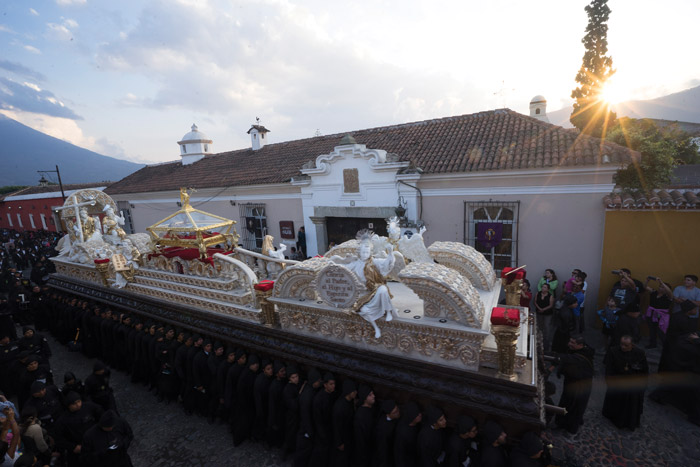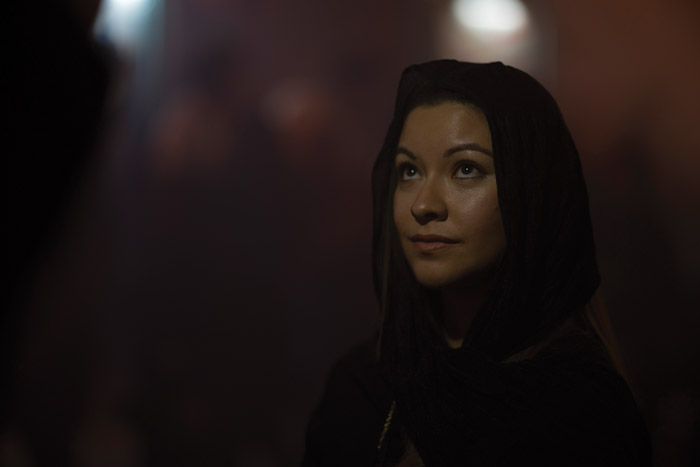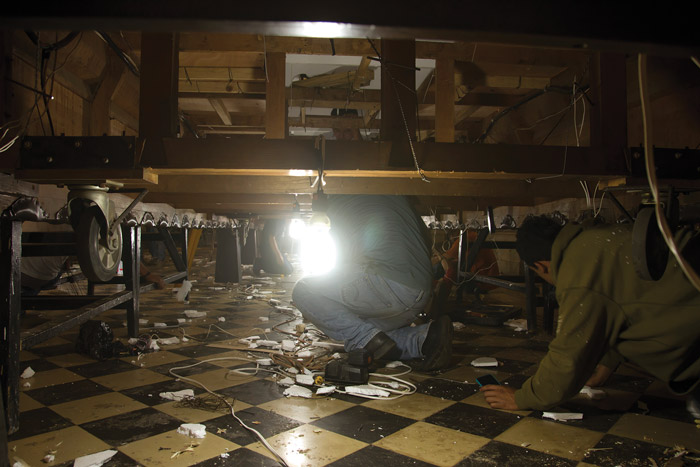ANDAS Processional Floats in Antigua
All five senses are assaulted by the many sights, sounds, smells, tastes and touch of the Lenten season, throughout Guatemala but especially in La Antigua. It is an intense period of sorrow, joy, regret, celebration that fills the days with sensual emotions.
The ornately colorful carpets, the funereal marches and drums, the pungent corozo and pine odors, the tostadas and churros to taste that are sold in atrios in fronts of all the churches, from Ash Wednesday through Easter Sunday, Lent is saturated with color, music, aroma, taste. And to touch the season, I urge you to touch, to sense, to feel the warm, worn woods of the andas that are in every Roman Catholic Church from the great cathedrals to simple back-country chapels.
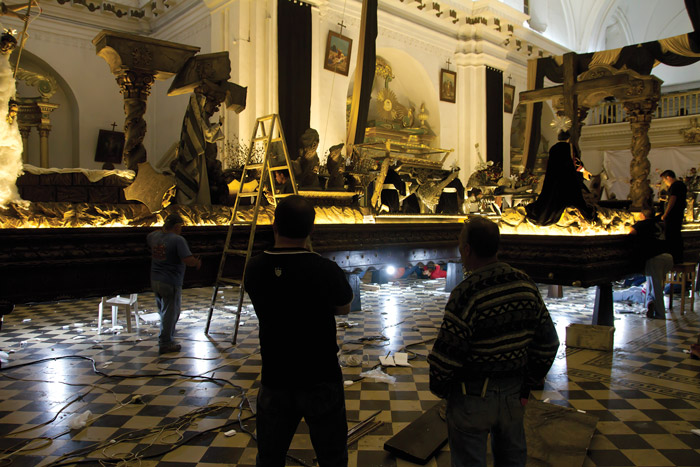
Members of Hermandad de la Escuela de Cristo, working on last minute details the night before procession. Photo by Willy Posadas
Andas are the platforms, the floats, the carved cedar wood bases that carry the religious figures and that are in turn carried by male cucuruchos and female cargadoras through the streets. Most andas aren’t very old. They must be replaced every few decades with new ones, often growing longer and heavier with each edition. Some of Antigua’s largest andas are more than 7,000 pounds, heavier than a couple of large automobiles, requiring 90 or 100 carriers plus some more hidden inside to assist with the weight, as well as a leader in front and a few pushing the andas from the back as the procession sways through town.
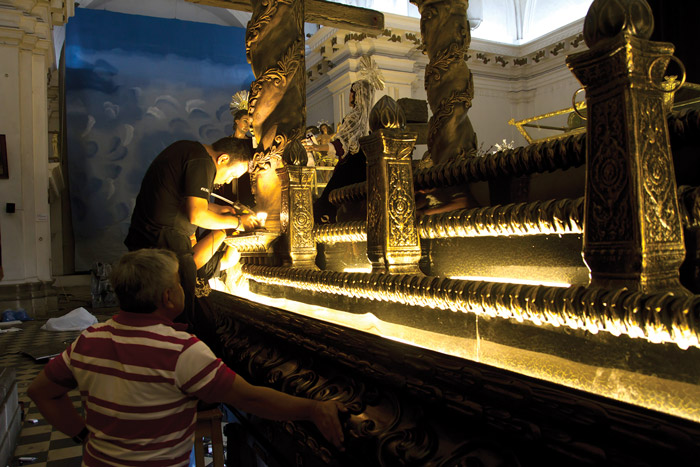
Members of Hermandad de la Escuela de Cristo, working on the Andas decorations. Photo by Willy Posadas.
Pre-Columbian Maya and other indigenous groups used small floats in processions long before the European Conquest, simple andas that four men could carry. The earliest Christian processions included andas carried by four to ten men, usually dressed in white and red, their faces masked and covered until well into the 20th century. Purple tunics or robes, white gloves and the peaked purple caps are now worn by men and boys until Good Friday after the time of the Crucifixion, when many wear black. The cargadora women wear simple black dresses, sometimes today walking rather amazingly over the cobblestone streets in high heels.
Processions of the sculptures of Christ and the saints happen all year, always for a particular sanctuary’s saint’s day. Beginning with the first full moon of spring, and continuing through the 40 days (not counting Sundays) of Lent, the processions are more frequent, with major displays from Palm Sunday through Good Friday and Saturday — and only fairly recently with a celebration of the Resurrection on Easter Sunday. Before any procession, the andas come out of storage and the platforms are decorated, as are the saints and figures on top of each float.
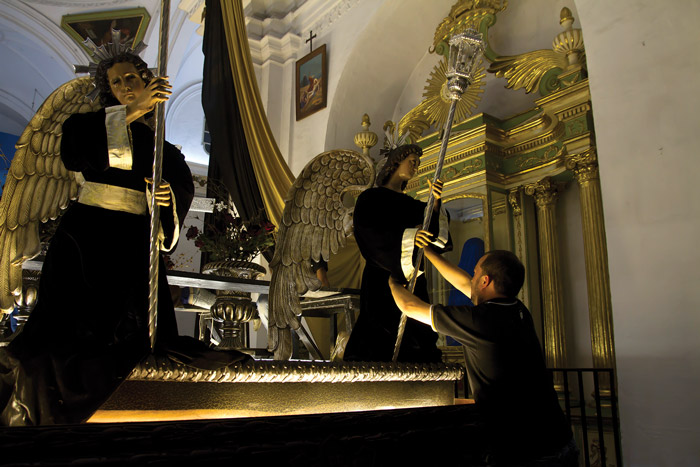
Andas artist Isaac Juárez, working on finishing touches the night before procession from Escuela de Cristo. Photo by Willy Posadas
The floats, their decorations and the processions are organized by each church’s hermandad, brotherhood. The brotherhoods commission the andas, replace them when they become too worn, and march proudly in front of each procession carrying a gonfalon, the banner of their group. These organizations were called cofradías until governments fearful of church groups having power that could be disruptive, and the brotherhoods changed names.
Cedar for new andas comes from carefully selected trees, full grown but not too old, ceremonially cut at times of certain moons, dried until ready for carving. The sides of andas are carved with intricate designs, and those you should feel to sense their powers.
Hermandades keep the cedar andas all year in corners of the churches. Until time for a procession, they rest and gather dust but hold their warmth and heritage. Seek them out in small and large Catholic churches, wherever you go around Guatemala. When you find an anda, feel it with your sense of touch. Reflect on the power and the emotion of the processions the float has experienced, and sense a special connection with their ceremonial heritage.
REVUE magazine article by Ken Veronda
More information about Hermandad de la Escuela de Cristo visit: facebook.com/escueladecristo
